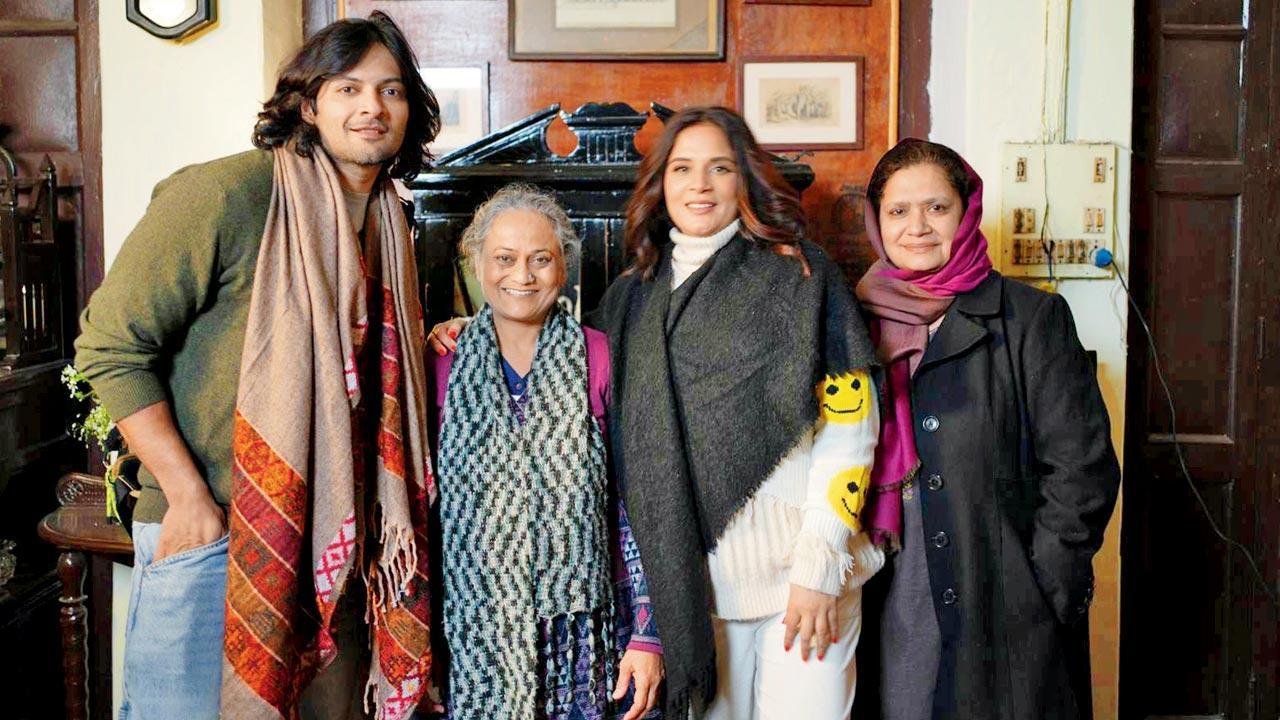Home / Sunday-mid-day / / Article /
‘This craft is so old that some of the stitches are extinct’
Updated On: 28 April, 2024 06:17 AM IST | Mumbai | Dhara Vora Sabhnani
Actor-producer and newly turned fashion entrepreneur Richa Chadha and designer Yasmin Saeed chit-chat all things Chikan with mid-day

Ali Fazal, Nivedita Bhargava, who is in the campaign, Richa Chadha and Yasmin Saeed
For actors and producers Richa Chadha and Ali Fazal, 2024 is a year of more than one new beginning. The couple is expecting their first child; Chadha is looking forward to next week’s release—Sanjay Leela Bhansali’s Heeramandi, and the two have turned fashion entrepreneurs for the first time. It was appropriate that their new Chikankari apparel label, Ehaab, which launched in collaboration with designer Yasmin Saeed, was announced on World Artisan Day, April 18.
The label gets its name from the Arabic word for the art of gifting, and lists creating regular employment for women involved in the heritage needle art of Lucknowi Chikan work, as its priority. Lucknow is Fazal’s and Saeed’s hometown. It’s here that she runs her wedding trousseau label, working with a variety of embroiderers, including Lucknowi Chikankari artisans. Chikankari was traditionally done on fine muslin, but recently, also increasingly on georgette, chiffon and organza. It involves making intricate floral and avian patterns in white on a white or coloured base. The craft, say experts, includes more than 30 stitches including the chain, hem and backstitch. Cheap machine-made “China Chikan” is flooding the markets of Lucknow, offering rip-offs at one-third the price, making an effort such as this is worthy of note.




